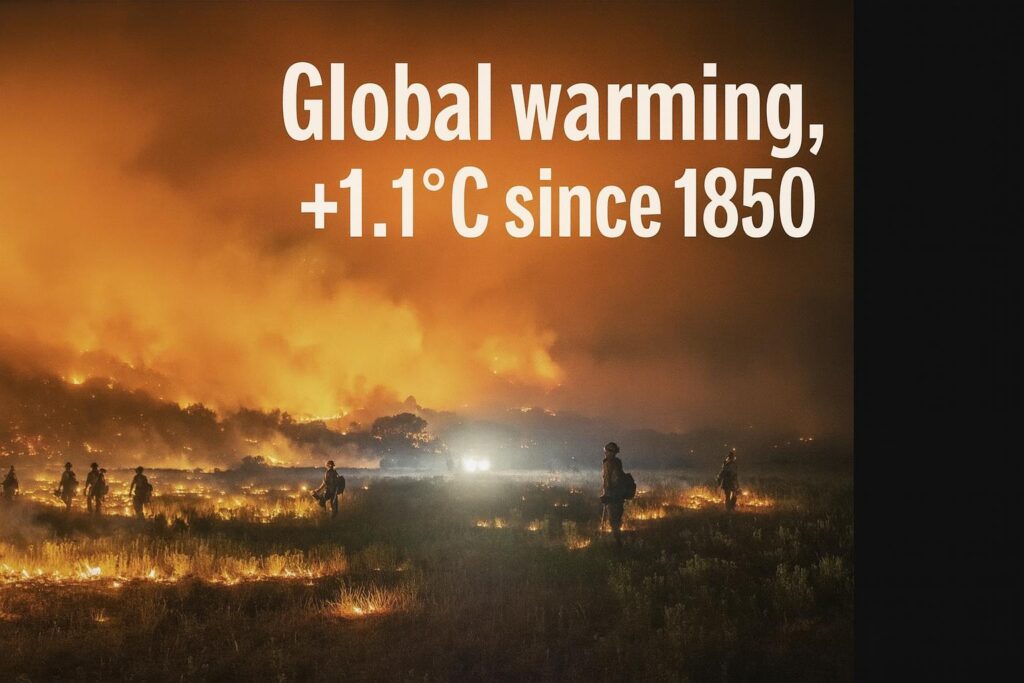As justification for their climate crisis hysteria, liberals keep insisting that average global temperatures have risen, with the most commonly cited figure being a 1.1°C to 1.3°C (2.0°F to 2.3°F) increase since the pre-industrial era (1850–1900). The National Oceanic and Atmospheric Administration (NOAA), however, begins its “reliable” records in 1880 and reports an increase of about 1.1°C (2.0°F) since then. Even NOAA acknowledges the limitations of early data, stating, “Earth’s surface temperature has risen about 2 degrees Fahrenheit since the start of the NOAA record in 1850.”
But these claims rest on flawed foundations. Ninety-six percent of U.S. temperature stations fail to meet NOAA’s own siting standards and are often surrounded by development, resulting in inflated readings from the urban heat island effect. The transition from mercury thermometers to digital sensors between the 1980s and 2000s introduced discontinuities in the data, right during the period of supposed accelerated warming. Early measurements were geographically concentrated in Europe and North America, ignoring vast regions, especially the 71% of the planet covered by oceans.
Measurement errors of ±0.5°C often exceed the very climate signals being used to justify sweeping policy changes. Worse still, much of the raw data has been adjusted or “homogenized” using subjective assumptions that can introduce as much bias as the trends being studied. These problems, taken together, undermine the precision required to detect the small temperature changes that underpin today’s aggressive climate agenda.
Approximately 96 percent of temperature stations used to measure climate change fail to meet the National Oceanic and Atmospheric Administration’s own standards for “acceptable” and uncorrupted placement. This finding comes from Anthony Watts’ Surface Stations Project, documented in multiple studies including “Corrupted Climate Stations: The Official U.S. Surface Temperature Record Remains Fatally Flawed.”
Watts and his team of volunteers found stations “located next to the exhaust fans of air conditioning units, surrounded by asphalt parking lots and roads, on blistering-hot rooftops, and near sidewalks and buildings that absorb and radiate heat.” Even more troubling, data from properly sited stations show “a rate of warming in the United States reduced by almost half compared to all stations.” This suggests that a significant portion of reported warming may be artificial, created by poor measurement practices rather than actual climate change.
One of the most persistent flaws in the temperature record is the urban heat island effect. Many weather stations originally placed in rural areas during the 1800s and early 1900s are now surrounded by urban development. Cities generate heat through concrete absorption, reduced vegetation, and dense human activity, producing temperature readings that are consistently 2–5°F warmer than nearby rural areas. This is not speculation, it’s basic physics.
Urban surfaces retain heat differently than natural landscapes, and as development grew around these stations, they began measuring the heat of human expansion rather than natural climate conditions. The result is an artificial warming trend unrelated to global climate change.
Economist Ross McKitrick’s peer-reviewed research, published in journals like Climate Dynamics, exposes another troubling trend: socioeconomic signals in temperature data. If these measurements were purely reflecting climate, no such patterns should exist. Instead, McKitrick found correlations between economic growth and recorded warming, indicating that long-term temperature trends may be partially driven by the development occurring around measurement sites, not by the climate itself.
Perhaps the most damning analysis comes from Stanford researcher Patrick Frank, whose statistical analysis reveals that “the average annual systematic measurement uncertainty is ±0.5°C, which completely vitiates centennial climate warming at the 95% confidence interval.” In practical terms, this means the measurement errors are larger than the climate changes being measured. Frank concludes that “we cannot reject the hypothesis that the world’s temperature has not changed at all.”
The transition from analog mercury thermometers to digital electronic sensors is one of the most significant discontinuities in the 150-year global temperature record. Before digitalization, temperatures were measured using mercury-in-glass thermometers, read manually by observers at specific times each day. In contrast, modern digital systems use electronic sensors that continuously sample temperatures, have different thermal response characteristics, and rely on automated data processing. This means the measurements taken with digital systems are dramatically more accurate and more complete than those collected manually using mercury thermometers.
In the United States, digital sensors began replacing analog instruments in the 1980s, rendering direct comparisons with earlier U.S. records unreliable. Globally, digital systems weren’t widely adopted until the 1990s and 2000s, making comparisons between U.S. and international temperature data invalid prior to full global standardization.
Early temperature records suffered from severe geographic bias. Measurements were heavily concentrated in Europe and North America, with vast regions including most oceans, polar areas, Africa, and Asia having sparse or no data. Ocean temperatures, covering 71% of Earth’s surface, were particularly poorly measured before the 1950s. This creates a fundamental sampling problem. Scientists attempting to calculate “global” temperature averages were actually working with data from a small fraction of the planet, then extrapolating to represent the entire Earth. The assumption that well-documented European and North American weather patterns represent global conditions is scientifically questionable.
To address acknowledged measurement problems, scientists apply extensive “corrections” and adjustments to raw temperature data through a process called homogenization. However, these adjustments involve assumptions and subjective decisions that can introduce their own biases.
Different research groups using different adjustment methods arrive at different temperature trends from the same raw data. The magnitude of these adjustments is often comparable to the climate signals being studied. When the corrections applied to data are as large as the trends being measured, the measurements lose all meaning.
Regardless of accusations that “climate deniers” are rejecting science, the implications of these flaws are serious. Trillions of dollars in policy decisions are being based on temperature records in which measurement errors exceed the very climate trends they claim to show.
Read the full article here
